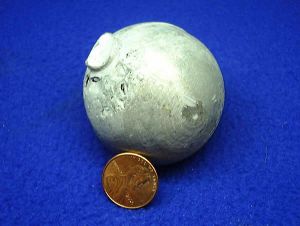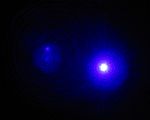Cadmium
| ||||||||||||||||||||||||||||||||||||||||||||||||||||||||||||||||||||||
| General | ||||||||||||||||||||||||||||||||||||||||||||||||||||||||||||||||||||||
|---|---|---|---|---|---|---|---|---|---|---|---|---|---|---|---|---|---|---|---|---|---|---|---|---|---|---|---|---|---|---|---|---|---|---|---|---|---|---|---|---|---|---|---|---|---|---|---|---|---|---|---|---|---|---|---|---|---|---|---|---|---|---|---|---|---|---|---|---|---|---|
| Name, Symbol, Number | cadmium, Cd, 48 | |||||||||||||||||||||||||||||||||||||||||||||||||||||||||||||||||||||
| Chemical series | transition metals | |||||||||||||||||||||||||||||||||||||||||||||||||||||||||||||||||||||
| Group, Period, Block | 12, 5, d | |||||||||||||||||||||||||||||||||||||||||||||||||||||||||||||||||||||
| Appearance | silvery gray metallic 
| |||||||||||||||||||||||||||||||||||||||||||||||||||||||||||||||||||||
| Atomic mass | 112.411(8) g/mol | |||||||||||||||||||||||||||||||||||||||||||||||||||||||||||||||||||||
| Electron configuration | [Kr] 4d10 5s2 | |||||||||||||||||||||||||||||||||||||||||||||||||||||||||||||||||||||
| Electrons per shell | 2, 8, 18, 18, 2 | |||||||||||||||||||||||||||||||||||||||||||||||||||||||||||||||||||||
| Physical properties | ||||||||||||||||||||||||||||||||||||||||||||||||||||||||||||||||||||||
| Phase | solid | |||||||||||||||||||||||||||||||||||||||||||||||||||||||||||||||||||||
| Density (near r.t.) | 8.65 g/cmÂł | |||||||||||||||||||||||||||||||||||||||||||||||||||||||||||||||||||||
| Liquid density at m.p. | 7.996 g/cmÂł | |||||||||||||||||||||||||||||||||||||||||||||||||||||||||||||||||||||
| Melting point | 594.22 K (321.07 °C, 609.93 °F) | |||||||||||||||||||||||||||||||||||||||||||||||||||||||||||||||||||||
| Boiling point | 1040 K (767 °C, 1413 °F) | |||||||||||||||||||||||||||||||||||||||||||||||||||||||||||||||||||||
| Heat of fusion | 6.21 kJ/mol | |||||||||||||||||||||||||||||||||||||||||||||||||||||||||||||||||||||
| Heat of vaporization | 99.87 kJ/mol | |||||||||||||||||||||||||||||||||||||||||||||||||||||||||||||||||||||
| Heat capacity | (25 °C) 26.020 J/(mol¡K) | |||||||||||||||||||||||||||||||||||||||||||||||||||||||||||||||||||||
| ||||||||||||||||||||||||||||||||||||||||||||||||||||||||||||||||||||||
| Atomic properties | ||||||||||||||||||||||||||||||||||||||||||||||||||||||||||||||||||||||
| Crystal structure | hexagonal | |||||||||||||||||||||||||||||||||||||||||||||||||||||||||||||||||||||
| Oxidation states | 2 (mildly basic oxide) | |||||||||||||||||||||||||||||||||||||||||||||||||||||||||||||||||||||
| Electronegativity | 1.69 (Pauling scale) | |||||||||||||||||||||||||||||||||||||||||||||||||||||||||||||||||||||
| Ionization energies | 1st: 867.8 kJ/mol | |||||||||||||||||||||||||||||||||||||||||||||||||||||||||||||||||||||
| 2nd: 1631.4 kJ/mol | ||||||||||||||||||||||||||||||||||||||||||||||||||||||||||||||||||||||
| 3rd: 3616 kJ/mol | ||||||||||||||||||||||||||||||||||||||||||||||||||||||||||||||||||||||
| Atomic radius | 155 pm | |||||||||||||||||||||||||||||||||||||||||||||||||||||||||||||||||||||
| Atomic radius (calc.) | 161 pm | |||||||||||||||||||||||||||||||||||||||||||||||||||||||||||||||||||||
| Covalent radius | 148 pm | |||||||||||||||||||||||||||||||||||||||||||||||||||||||||||||||||||||
| Van der Waals radius | 158 pm | |||||||||||||||||||||||||||||||||||||||||||||||||||||||||||||||||||||
| Miscellaneous | ||||||||||||||||||||||||||||||||||||||||||||||||||||||||||||||||||||||
| Magnetic ordering | no data | |||||||||||||||||||||||||||||||||||||||||||||||||||||||||||||||||||||
| Electrical resistivity | (22 °C) 72.7 nΊ¡m | |||||||||||||||||||||||||||||||||||||||||||||||||||||||||||||||||||||
| Thermal conductivity | (300 K) 96.6 W/(m¡K) | |||||||||||||||||||||||||||||||||||||||||||||||||||||||||||||||||||||
| Thermal expansion | (25 °C) 30.8 ¾m/(m¡K) | |||||||||||||||||||||||||||||||||||||||||||||||||||||||||||||||||||||
| Speed of sound (thin rod) | (20 °C) 2310 m/s | |||||||||||||||||||||||||||||||||||||||||||||||||||||||||||||||||||||
| Speed of sound (thin rod) | (r.t.) 50 m/s | |||||||||||||||||||||||||||||||||||||||||||||||||||||||||||||||||||||
| Shear modulus | 19 GPa | |||||||||||||||||||||||||||||||||||||||||||||||||||||||||||||||||||||
| Bulk modulus | 42 GPa | |||||||||||||||||||||||||||||||||||||||||||||||||||||||||||||||||||||
| Poisson ratio | 0.30 | |||||||||||||||||||||||||||||||||||||||||||||||||||||||||||||||||||||
| Mohs hardness | 2.0 | |||||||||||||||||||||||||||||||||||||||||||||||||||||||||||||||||||||
| Brinell hardness | 203 MPa | |||||||||||||||||||||||||||||||||||||||||||||||||||||||||||||||||||||
| CAS registry number | 7440-43-9 | |||||||||||||||||||||||||||||||||||||||||||||||||||||||||||||||||||||
| Notable isotopes | ||||||||||||||||||||||||||||||||||||||||||||||||||||||||||||||||||||||
| ||||||||||||||||||||||||||||||||||||||||||||||||||||||||||||||||||||||
Cadmium (chemical symbol Cd, atomic number 48) is a relatively rare, soft, bluish-white metal. Its chemical properties are similar to those of zinc, and it is found in zinc ores. Unlike zinc, however, cadmium and solutions of its compounds are toxic and need to be handled with care.
This element and its compounds are used in electrical batteries, pigments, electroplating, plastics stabilizers, and many kinds of solder. In nuclear reactors, cadmium is used as a barrier to control nuclear fission reactions. Some compounds of cadmium function as semiconductors.
Occurrence and production
Cadmium-containing ores are rare. The only cadmium mineral of importance is Greenockite (cadmium sulfide, CdS), which is nearly always associated with sphalerite (zinc sulfide, ZnS). Consequently, cadmium is produced mainly as a byproduct from mining, smelting, and refining the sulfide ores of zinc. To a lesser degree, it is obtained from the ores of lead and copper.
Zinc sulfide ores are roasted in the presence of oxygen, thereby converting the sulfide to zinc oxide. To produce zinc metal, the oxide is either smelted with carbon or subjected to electrolysis in sulfuric acid. If the smelting process is used, cadmium is isolated from metallic zinc by vacuum distillation. If the electrolytic process is used, cadmium sulfate is precipitated out of the solution.[1]
Small amounts of cadmium, about ten percent of consumption, are produced from secondary sourcesâmainly from dust generated when recycling iron and steel scrap. Production in the United States began in 1907, but it was not until after World War I that cadmium came into wide use.
History
Cadmium (Latin cadmia, Greek kadmeia meaning "calamine") was discovered in Germany in 1817 by Friedrich Strohmeyer. Strohmeyer found the new element as an impurity in zinc carbonate (calamine), after he noticed that some impure samples of calamine changed color when heated, but pure calamine did not. The element was named after the Latin word for calamine, having been found in this zinc compound. For about 100 years, Germany remained the only important producer of the metal.
Although cadmium and its compounds are highly toxic, the British Pharmaceutical Codex from 1907 states that cadmium iodide was used as a medicine to treat "enlarged joints, scrofulous glands, and chilblains."
In 1927, the International Conference on Weights and Measures redefined the meter in terms of a red cadmium spectral line (one meter = 1,553,164.13 wavelengths). This definition has since been changed (see krypton).
Notable characteristics
Cadmium is a soft, malleable, ductile, bluish-white metal that can be easily cut with a knife. In the periodic table, it lies in group 12 (former group 2B), between zinc and mercury. In addition, it is located in period five, immediately following silver.
Cadmium is similar in many respects to zinc but reacts to form more complex compounds. The most common oxidation state of cadmium is +2, though rare examples of +1 can be found. The most common salt of cadmium is cadmium sulfide, which has a yellow color.
As an element in group 12, cadmium has traditionally been classified as a "transition metal." This view, however, has been changed, based on the current definition of transition elements stated by the International Union of Pure and Applied Chemistry (IUPAC). According to that definition, a transition element is "an element whose atom has an incomplete d sub-shell, or which can give rise to cations with an incomplete d sub-shell."[2] Cadmium does not fit this definition because its atoms and ions contain electrons that completely fill the d orbitals.
Isotopes
Naturally occurring cadmium is composed of eight isotopes. At least three of themâ110Cd, 111Cd, and 112Cdâare known to be stable. Two others have been observed to be radioactive, but with extremely long half-lives: 113Cd, with a half-life of 7.7 X 1015 years; and 116Cd, with a half-life of 2.9 X 1019 years. The other threeâ106Cd, 108Cd, and 114Cdâare predicted to be radioactive, but their decays have not been observed, as they too are expected to have extremely long half-lives.
Among the radioactive cadmium isotopes absent in nature, the most long-lived are 109Cd, with a half-life of 462.6 days, and 115Cd, with a half-life of 53.46 hours. All the remaining radioactive isotopes have half-lives that are less than 2.5 hours, and the majority of these have half-lives that are less than five minutes. This element also has eight known meta states, with the most stable being 113mCd (half-life = 14.1 years), 115mCd (half-life = 44.6 days), and 117mCd (half-life = 3.36 hours).
Compounds
- Cadmium chloride (CdCl2): This white crystalline compound is highly soluble in water and slightly soluble in ethanol. Although it is considered to be ionic, it has considerable covalent character to its bonding. Its crystal structure is a two-dimensional layer lattice that is often used as a reference for describing other crystal structures. It is used for the preparation of cadmium sulfide and for electroplating. In the laboratory, anhydrous CdCl2 can be used for the preparation of organocadmium compounds of the type R2Cd (where R is an aryl or primary alkyl group).
- Cadmium selenide or cadmium(II) selenide (CdSe): This is a solid, semiconducting material, but it has yet to find many applications in manufacturing. It is transparent to infrared (IR) light and has seen limited use in windows for instruments utilizing IR light. It is also being developed for use in opto-electronic devices, laser diodes, nanosensing, and biomedical imaging.[3][4][5][6] Much current research on cadmium selenide has focused on the controlled synthesis and properties of CdSe nanoparticles, and determination of their potential uses. It should be noted that selenides are toxic in large amounts.
- Cadmium sulfide or cadmium sulphide (CdS): This compound, which forms yellowish, hexagonal crystals, is found in nature as the mineral greenockite. It has a specific gravity of 4.7 and Mohs hardness of 3.8. Synthetic cadmium pigments based on cadmium sulfide are valued for their good thermal stability in many polymers, particularly plastics. By adding selenium to its chemical formula, it is possible to obtain pigments ranging in color from greenish yellow to red-violet. In addition, cadmium sulfide is a direct bandgap semiconductor that is useful for photosensitive and photovoltaic devices. When mixed with zinc sulfide, cadmium sulfide acts as a phosphor with a long afterglow.
Applications
Cadmium, its alloys, and its compounds have a variety of applications. About three-fourths of commercially available cadmium is used in batteries (especially nickel-cadmium batteries), and most of the remaining one-fourth is used for pigments, coatings, electroplating, and stabilizers for plastics.
Additional uses of cadmium are as follows:
- It is used in some of the lowest melting alloys.
- Given its low coefficient of friction and high fatigue resistance, it is used in alloys for bearings.
- It is a component of many kinds of solder.
- It is used in nuclear reactors as a barrier to control nuclear fission.
- Compounds containing cadmium are used in black and white television phosphors, and in the blue and green phosphors for color television picture tubes.
- Cadmium sulfide is used as a yellow pigment, and cadmium selenide is used as a red pigment commonly called cadmium red. Cadmium yellows, oranges, and reds are among the most potent colors available. During production, these colors are significantly toned down before being ground with oils and binders, or blended into watercolors, gouaches, casesin, acrylics, and other paint and pigment formulations. These pigments, however, are toxic, and one needs to prevent absorption through the skin by, for instance, applying a barrier cream on one's hands.
- Some semiconductors are made of cadmium sulfide, cadmium selenide, or cadmium telluride, which can be used for light detection or solar cells. Mercury cadmium telluride (HgCdTe) is sensitive to infrared.
Precautions
Cadmium has no known function in the human body. This element and solutions of its compounds are toxic even at low concentrations, and they bioaccumulate in organisms and ecosystems. One possible reason for the toxicity of cadmium is that it interferes with the action of zinc-containing enzymes. Zinc is an important element in biological systems, but cadmium, although chemically similar to zinc, is not a healthy substitute for zinc. Likewise, cadmium may also interfere with biological processes requiring magnesium and calcium. Pathways of human contact include soil contamination from industrial releases or landfill and associated leachate processes.
Inhaling cadmium-laden dust quickly leads to respiratory tract infection and kidney problems, which can be fatal (often from renal failure). Ingestion of any significant amount of cadmium causes immediate poisoning and damage to the liver and kidneys. Compounds containing cadmium are also carcinogenic[7] and can induce many types of cancer.[8]
Cadmium poisoning is the cause of itai-itai disease, which literally means "ouch ouch" in Japanese. In addition to kidney damage, patients suffer from osteoporosis and osteomalacia (the equivalent of rickets among adults).
While working with cadmium, it is important to do so under a fume hood to protect against dangerous fumes. Cadmium-containing silver solder should be handled with care. Serious toxicity problems have resulted from long-term exposure to cadmium plating baths.
Notes
- â Cadmium at WebElements.com. Retrieved February 26, 2008.
- â IUPAC definition of a transition element Retrieved February 26, 2008.
- â Christopher Ma, et al., "Single-Crystal CdSe Nanosaws," J. Am. Chem. Soc, 2004, 126, 708-709.
- â V.L. Colvin, M.C. Schlamp, and A.P. Alivisato, Nature, 1994, 370, 354.
- â W.C. Chan, and S.M. Nie, Science, 1998, 281, 2016.
- â M. Bruchez, M. Moronne, P. Gin, S. Weiss, and A.P. Alivisatos, Science, 1998, 281, 2013.
- â Chemical References Retrieved February 26, 2008.
- â Cadmium linked to Breast Cancer Retrieved February 26, 2008.
ReferencesISBN links support NWE through referral fees
- Greenwood, N. N., and A. Earnshaw. Chemistry of the Elements, 2nd ed. Oxford, UK: Butterworth-Heinemann, 1997.
- March, J. Advanced Organic Chemistry, 4th ed. New York: Wiley, 1992.
- Nicholls, D. Complexes and First-Row Transition Elements. London: Macmillan Press, 1973.
- Wells, A. F. 'Structural Inorganic Chemistry, 5th ed. Oxford, UK: Oxford University Press, 1984.
- Handbook of Chemistry and Physics, 71st ed. Ann Arbor, Michigan: CRC Press, 1990.
- The Merck Index, 7th ed. Rahway, New Jersey: Merck & Co, 1960.
External links
All links retrieved November 25, 2023.
Credits
New World Encyclopedia writers and editors rewrote and completed the Wikipedia article in accordance with New World Encyclopedia standards. This article abides by terms of the Creative Commons CC-by-sa 3.0 License (CC-by-sa), which may be used and disseminated with proper attribution. Credit is due under the terms of this license that can reference both the New World Encyclopedia contributors and the selfless volunteer contributors of the Wikimedia Foundation. To cite this article click here for a list of acceptable citing formats.The history of earlier contributions by wikipedians is accessible to researchers here:
The history of this article since it was imported to New World Encyclopedia:
Note: Some restrictions may apply to use of individual images which are separately licensed.



